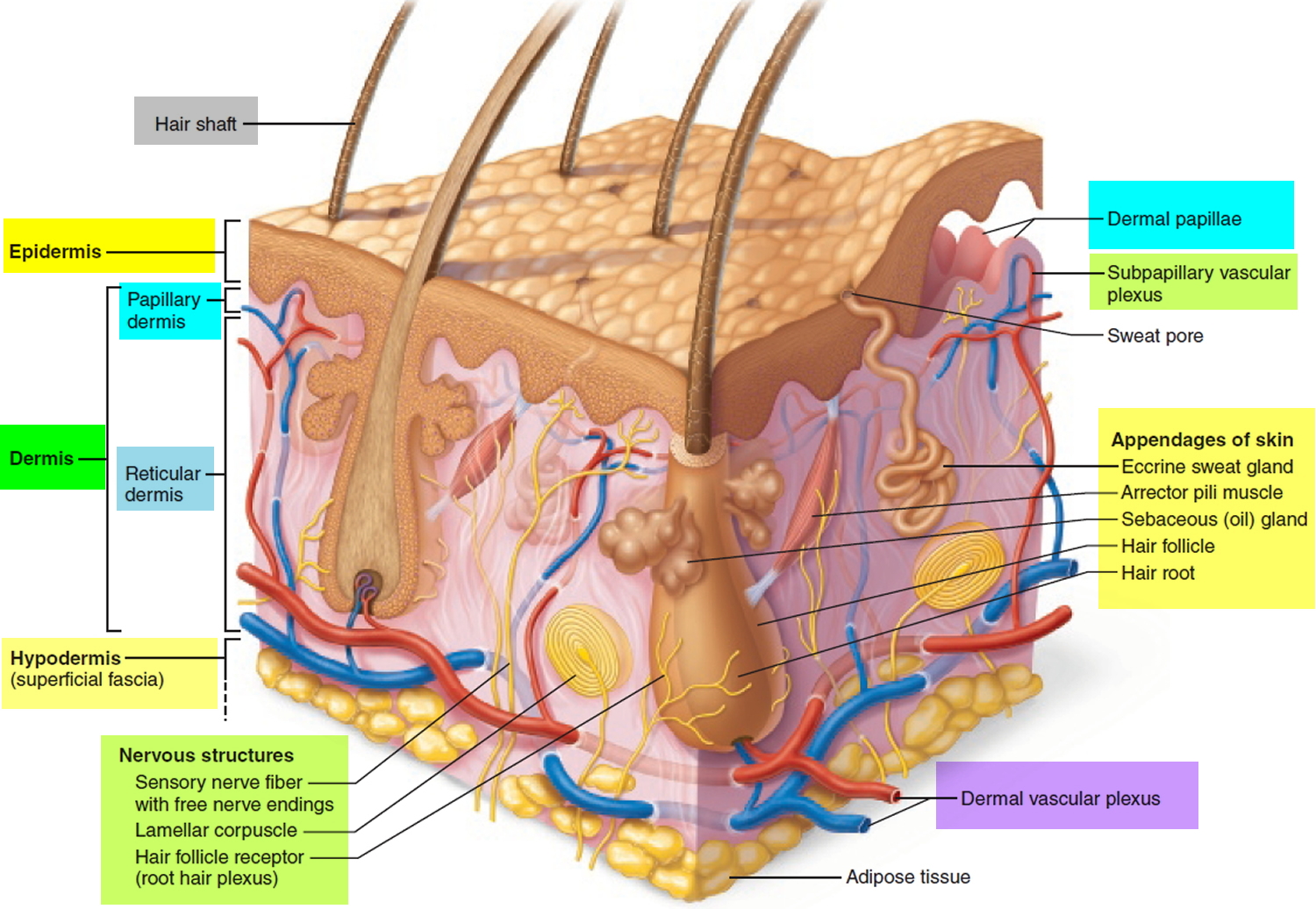Human skin is made up of three layers the subcutaneous tissue the dermis and the epidermis

Human Skin: An Incredible Three-Layered Structure

The human skin, which serves as a protective barrier for our body, is an incredible organ made up of three distinct layers: the subcutaneous tissue, the dermis, and the epidermis. Each layer plays a vital role in ensuring the overall health and functionality of our skin, making it more than just a superficial covering. In this article, we will delve into the fascinating structure and functions of these three layers, providing you with a comprehensive understanding of the complex organ that envelops your body.
1. Subcutaneous Tissue

The subcutaneous tissue, also known as the hypodermis, is the innermost layer of the skin. Composed of fat, connective tissues, and blood vessels, this layer acts as an insulator, regulating body temperature and providing a cushion against external physical trauma. Additionally, the subcutaneous tissue plays a crucial role in storing energy and preserving body warmth. Its fatty composition aids in the absorption of certain vitamins, such as vitamin D necessary for maintaining healthy bones.
2. Dermis
Beneath the epidermis lies the dermis, a thick layer composed of collagen, elastin, nerve endings, blood vessels, hair follicles, and sweat glands. The dermis supplies the epidermis with essential nutrients and oxygen while also providing structural support to the skin. This layer is responsible for the elasticity and strength of our skin, making it resistant to tearing and limiting the formation of wrinkles. The rich supply of blood vessels within the dermis helps with temperature regulation through the dilation or constriction of these vessels.
Furthermore, the dermis houses various nerve receptors, which allow us to perceive different sensations such as touch, pressure, heat, and cold. These receptors ensure that we can interact with our environment in a meaningful way, enhancing our sensory experiences.
3. Epidermis
The outermost layer of the skin is the epidermis, which acts as the body’s primary defense against environmental factors, pathogens, and UV radiation. Composed of multiple layers of cells, the epidermis constantly undergoes renewal and regeneration. The outermost layer of the epidermis, called the stratum corneum, is primarily comprised of dead skin cells that provide a protective barrier against water loss, irritants, and microbial invasions.
The epidermis also contains specialized cells called melanocytes, which produce melanin, the pigment responsible for determining skin color. The distribution and activity of melanocytes determine our susceptibility to sunburn and other forms of sun damage.
Overall, the three layers of the skin work together harmoniously to form a resilient and functional organ that protects us from external harm, regulates body temperature, senses our surroundings, and contributes to our unique physical appearance.
Source: Everyday Mysteries - Library of Congress
Note: The images used in this article can be found through the provided links.
Tags
Share
Related Posts
Quick Links
Legal Stuff

